Swamp Rose Mallow, Crimsoneyed Rosemallow, Marshmallow, Woolly Rose Mallow, Hairy-fruited Hibiscus - Hibiscus moscheutos
|
Hibiscus moscheutos - Swamp Rose Mallow, Crimsoneyed Rosemallow, Marshmallow, Woolly Rose Mallow, Hairy-fruited Hibiscus. I believe what is currently represented on this page is Hibiscus moscheutos ssp. lasiocarpos. Many publications still reflect this plant as a separate species, Hibiscus lasiocarpos - Rosemallow, Woolly Rose Mallow. However, I typically use ITIS when I find conflict with the scientific name of a plant, and in ITIS the accepted name is Hibiscus moscheutos ssp. lasiocarpos. My rationale for thinking this ssp. lasiocarpos is the red stems and leaf veins. I have combined the separate range information from the USDA Plants Database in the list below, while the USDA range map on this page shows only the range of Hibiscus moscheutos without including Arkansas, and California, states where lasiocarpos is found but other varieties and subspecies of Hibiscus moscheutos are not found. Note that the Jepson Flora Project of California plants treats this as Hibiscus lasiocarpos Cav. var. occidentalis as of July 23, 2013.
Hibiscus moscheutos ssp. lasiocarpos is Rare or Endangered in Indiana and California.
Found in:
AL, AR, CA, CT, DC, DE, FL, GA, IL, IN, KS, KY, LA, MA, MD, MI, MO, MS, NC, NJ, NM, NY, OH, OK, PA, RI, SC, TN, TX, UT, VA, WI, WV
Leave comments on Hibiscus moscheutos at this link. | 
Distribution of Hibiscus moscheutos in the United States and Canada:
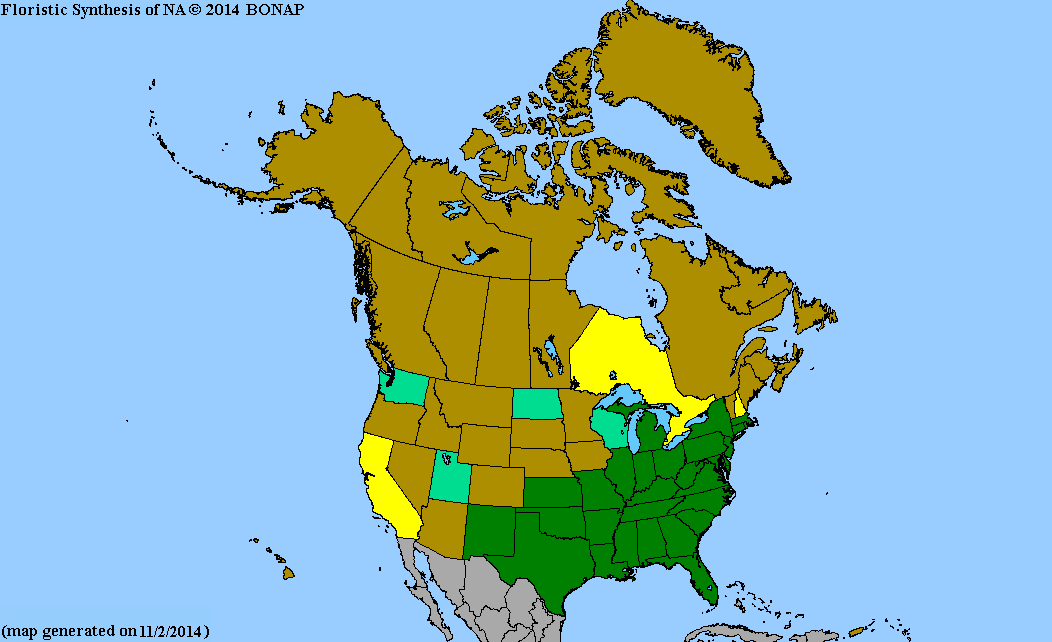
Map courtesy of The Biota of North America Program.
Map color key
Search Our Database: Enter any portion of the Scientific, Common Name, or both.
Do a general Google search of the entire site:
#ad
 Follow USWildflowers on Twitter
#ad
| | Site: Riverwalk, Amnicola Marsh, Hamilton County, TN Date: 2013-July-20 | Photographer: Gerald C. Williamson
Nikon D7000
Tamron SP 90MM f/2.8 AF Macro | | Another common name for Hibiscus moscheutos is Crimsoneyed Rosemallow because the bases of the otherwise white petals are crimson, forming a red center to the large blossom. The blossom may be as much as 4 inches across. | | 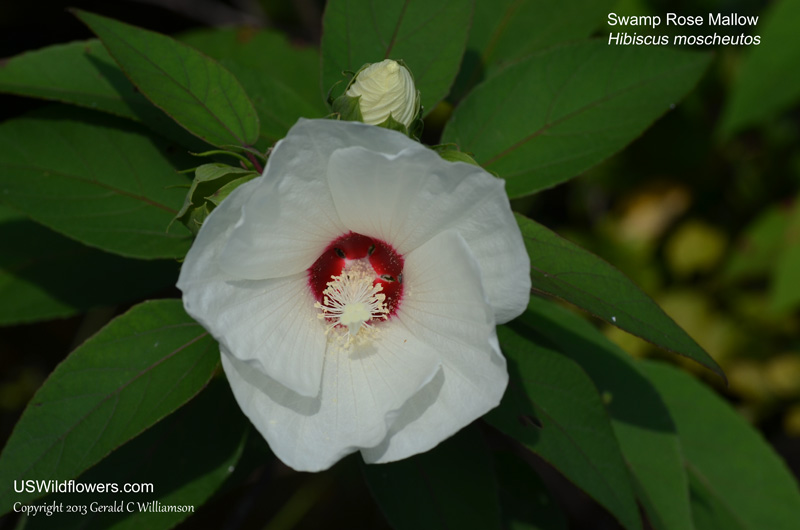
| | Site: Riverwalk, Amnicola Marsh, Hamilton County, TN Date: 2013-July-20 | Photographer: Gerald C Williamson
Nikon D7000 | | The white petals are up to around 3 inches long. There are narrow, elongated, curling bracts under the calyx, which look quite interesting. My observation is the flowers of this species of Hibiscus close at night; I believe they last for several days. Some species blossoms only last a single day before they wither. | | Click on the photo for a larger image
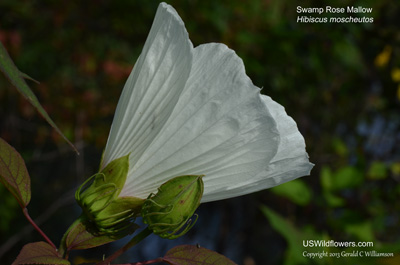
| | Site: Riverwalk, Amnicola Marsh, Hamilton County, TN Date: 2013-July-02 | Photographer: Gerald C Williamson
Nikon D7000 | | Hibiscus moscheutos has several blossoms near the end of the leafy stem. I believe this is ssp. lasiocarpos due to the red leaf veins and stems. | | Click on the photo for a larger image
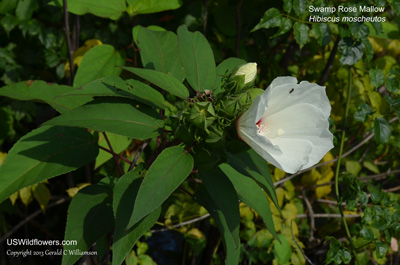
| | Site: Riverwalk, Curtain Pole Road Pond, Hamilton County, TN Date: 2013-July-20 | Photographer: Gerald C Williamson
Nikon D7000 | | Swamp Rose Mallow is also known as Marsh Mallow. This photo explains those names - it is a shrub or herb that grows along the margins of ponds and watery marshlands. | | Click on the photo for a larger image
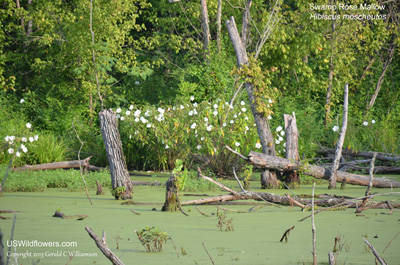
| | Site: Riverwalk, Amnicola Marsh, Hamilton County, TN Date: 2013-July-02 | Photographer: Gerald C Williamson
Nikon D7000 | | The style of Hibiscus is 5-branched at the end, each branch with a fuzzy head-like stigma. | | Click on the photo for a larger image
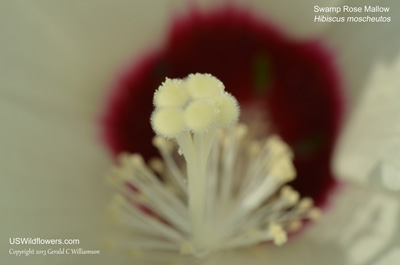
| | Site: Riverwalk, Amnicola Marsh, Hamilton County, TN Date: 2013-July-20 | Photographer: Gerald C Williamson
Nikon D7000 | | The stamen filaments are fused into a cylinder surrounding the style for most of its length. The filaments split off the fused cylinder holding the anthers away from the central tube along most of its length. | | Click on the photo for a larger image
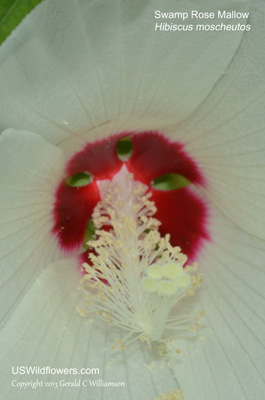
|
References used for identification and information:
|
|
| |
| #ad
|
|








